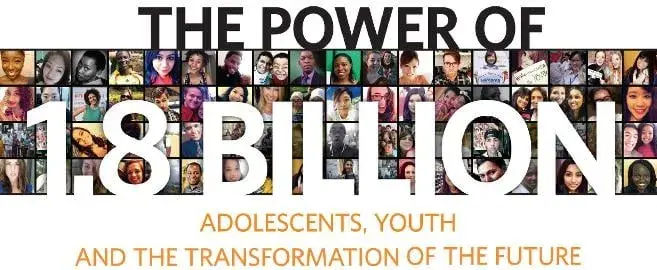Today’s record 1.8 billion young people present an enormous opportunity to transform the future.
More than 1 billion of these young people live in Asia and the Pacific. That’s more than half of the global youth population.
How we meet their needs and aspirations and enable them to enjoy their rights will define our common future.
The State of World Population 2014 makes the case for urgently investing in young people so that they can be engaged in their communities and the development of their nations. Never again is there likely to be such potential for economic and social progress.
In particular, developing countries with large youth populations could see their economies soar, provided they invest heavily in young people’s education and health, and protect their rights.
According to the new report, these potential rapid economic gains can be realized through a “demographic dividend,” which can occur when a county’s working age population is larger than the population that is dependent (elderly) and younger (children).
But to maximize the dividend and ensure that growth in equitable and inclusive, countries must ensure their young working-age populations are equipped to seize opportunities for jobs and other income-earning possibilities.
Yet many young people in Asia and the Pacific still encounter obstacles to their rights that keep them from safely moving into adulthood and entering the workforce:
Approximately 35 per cent of adolescents in Asia and the Pacific are not enrolled in secondary school - though with variations across sub-regions. Less education means higher unemployment rates and lower paying jobs, trapping young people in a cycle of poverty.
Young people in Asia and the Pacific face unemployment rates up to eight times higher than adults, and many of those who do work have jobs with poor pay and few prospects.
Sexual and reproductive health and reproductive rights are essential to young people realizing their full potential, yet large gaps in information and services persist.
The report shows that girls and young women in youth-dominated populations tend to be most likely to have less access to contraception: nearly 25 per cent of women (15-24) in South and Southeast Asia have an unmet need for family planning.
Each year, nearly six million adolescent girls give birth in Asia and the Pacific. This has consequences on their health, education, employment and rights.
Births among adolescents are highest where child marriage is most prevalent, and child marriages are generally more frequent where poverty is extreme. Half of the child brides in the developing world live in Asia. In South Asia, two out of five girls will be married before their 18th birthday.
These obstacles can be overcome with the right policies and investments.
In the 1950s and 1960s, several East Asian economies invested heavily in young people’s capabilities and in expanding their access to voluntary family planning, enabling individuals to start families later and have fewer children. The result was unprecedented economic growth. The Republic of Korea, for example, saw its per-capita gross domestic product grow about 2,200 per cent between 1950 and 2008.
Among the most promising strategies for spurring national development and improving the prospects of young people are energetic and well-timed investments in education, health—including sexual and reproductive health—and the status of women. These are not only essential to enable young people to enjoy their rights, but will also help them realize their full potential.
A young person of 10 in 2015 will be an adult of 25 in 2030, the target year for achieving the next generation of sustainable development goals. Governments aiming high today will make that young person’s future a brighter one, with rights and promises fulfilled and potential realized.


